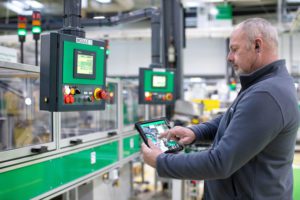This audio was created using Microsoft Azure Speech Services
Evolving customer needs and the impact of digital transformation has introduced a significant amount of complexity to the machine design and building process. OEM machine builders need to go beyond the traditional machine design process to profitably deliver “smart” machines with higher throughput, reduced operating cost, and increased safety.
Fortunately, new technologies are emerging in the marketplace that act as a counterbalance to this complexity. These technologies are specifically designed to optimize the digitization aspects of the new generation of “smart” machines by powering greater operational efficiencies to shorten time to market, optimize use of expertise, increase in productivity and reduction of downtime.
Benefits throughout the machine lifecycle
Below are examples of how some of these new technologies are enhancing OEM machine builder productivity, shortening development while delivering on the promises of the smart machine concept through the three critical phases of a machine’s life cycle: design and engineering, commissioning and operation, and maintenance and service.
- Design and engineering phase– Problems in the design stage typically require reworking machine parts and this can lead to long delays and increased expenses and can mean the difference between profit and loss for the machine builder. Collaborative engineering software tools enable simulation of how parts will work in the machine prior to assembly of that machine. This “digital twin” concept allows testing on a virtual machine first before the actual machine is assembled. Engineering efficiency also improves through automated code analysis, code generation and testing. Such automated engineering and simulation capabilities can reduce time-to-market by up to 30%.
- Commissioning and operation phase – Digitization-enabled analytics now allow the OEM machine builder to simplify device commissioning through automatic discovery of devices in an open automation architecture. Once discovered, the device settings can be downloaded and uploaded as required. Communication tests are then initiated and automatic communication reports are quickly generated. In order to better support customer operations, the digitized machines, once delivered, integrate with the IT environment to provide a full overview of the OEM machine builder’s field assets while connected at the same time with their internal production planning system. Through automated commissioning and integration to the IT world, OEM machine builder operational and support efficiency can improve by up to 40%.
- Maintenance and service phase – Digitized services are now enabling OEM machine builders to discover new ways for supporting their customers. A repository service that enhances the ability to track assets helps OEM machine builders to access machine history, bill of materials information, localization details, maintenance logs, warranty information, and spare parts availability. Machine information can be accessed anytime and anywhere just by logging into a web based portal. Advanced monitoring of customer machine assets also enables predictive maintenance and the resolution of issues before any unanticipated downtime occurs. Once on-site maintenance work is required, operators and technicians can be guided through maintenance steps remotely using augmented reality. Together, these digitized support tools can reduce the time for corrective actions by up to 50%.
An open architecture tie-in
What allows these technologies to work together across phases are open, vendor agnostic architectures (like EcoStruxure Machine) that deliver visibility and scalability of management systems. Through an open but tailored stack of connected products, control level software, and cloud-based services, enhanced support for applications and data analytics are enabled. Such platforms are made accessible to developers and to a wide ecosystem of partners so that systems are more agile, flexible and secure. This common platform/open architecture approach accommodates information technology (IT) and operations technology (OT) equipment convergence and boosts software and IIoT-oriented solution development.
Click here for more information on how OEM machine builders can drive profitability through digitalization of their operations.



